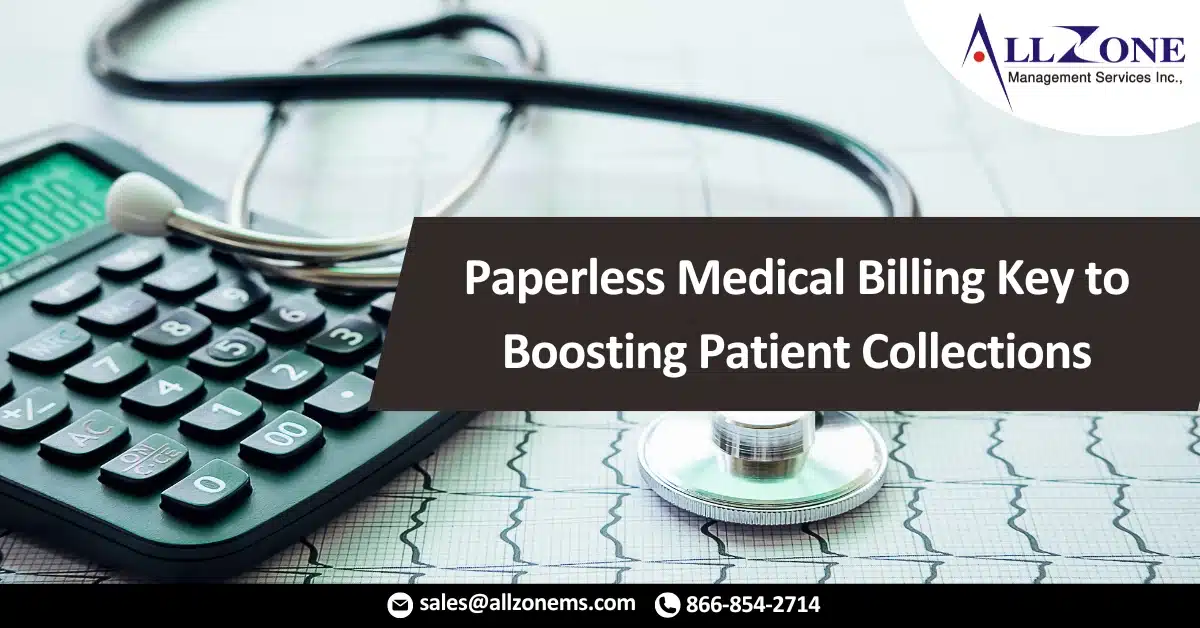The Doctor in California collected nearly 40 percent of sitting A/R a month after digitizing medical billing and patient collections.
In the age of smartphones, tablets, and other technologies that put information literally in the palm of our hands, why do doctors still rely on paper to reach their patients for medical billing purposes?
That was the question Max Tselevich, CEO of The Doctor, a Medical Services Management Company, asked himself about two and a half years ago. Like many of his peers, his West Hollywood, California practice relied on paper medical bills and other manual patient services to connect patients to healthcare services.
Nearly all providers still use some form of paper-based medical billing and patient collections, a recent HIMSS Analytics and Waystar survey of 900 healthcare financial executives revealed. And 77 percent of healthcare leaders said they specifically have paper-based patient billing, a 2017 MGMA and Navicure survey found.
While healthcare organizations are still in the era of paper and manual processes, patients are well into the age of digital payments. Over one-half of the patients surveyed by HIMSS Analytics and Waystar said they prefer electronic medical billing and patient collections.
Patients also said they were more likely to pay their medical bills if they had the option to do so online.
The digital revolution allows patients to use technology to book appointments, check-in, access their medical records, request prescription refills, and update their patient portal information. But the technological advancement that had the biggest impact on the practice’s bottom line was electronic medical billing.
Sending numerous paper statements to younger patients will not help to boost patient collection rates. “Sending a paper statement to a millennial or leaving a voicemail is about as useless as a hamburger driving a vehicle.
To recoup revenue owed to the practice, the practice sought ways to get medical bills in front of their patients on tools that they used everyday. The solution is digitized medical bills that communicates patient financial responsibility via email or text and provide patients with a way to pay their bills in one-click.
The electronic medical billing solution, which was offered by Collectly through the practice’s EHR and practice management system, DrChrono, allowed the California practice to put medical bills directly into the hands of patients.
“They receive a text on their phone and all they have to do is click one button and it explains to them what that bill is for, how much it is, how to make a payment,” Tselevich explained.
The solution automatically sends each patient a text regarding their bill once a provider logs the visit and inputs the billing codes for the services rendered. The texts prepare patients for collections using a series of communications regarding their patient financial responsibility.
“The moment our billers process that appointment in DrChrono, it automatically triggers Collectly to send the patient a message that says, ‘Hey, by the way, you just visited the doctor. This is just a heads up that you might get a bill,’” he elaborated.
“That precursor message is a nice way of opening things up,” he continued. “Then, the system doesn’t bother them for a couple of days. After that time, the patient receives another message that says, ‘Hey, here’s your bill. It’s ready.’ They click on the provided link and that’s where they get the explanation of the bill.”
Patients can also pay their bills using the electronic communications from their doctor. When patients click on the link to pay their bills, they have the option of creating a payment plan based on their specific needs.
“There’s a little sliding bar that you move with your finger to choose what amount of payment you can do today,” he elaborated. “Then, it will automatically split it into either monthly or bimonthly payments until your payment is full. It does it automatically by deducting it from your credit card without giving out that credit card info, of course.”
The electronic medical billing solution also offers patients a digital way to speak with an expert about their bill. Within the text, patients have the option of contacting a customer service representative from the vendor who can explain their charges and provide advice on paying their medical bills.
The adoption of practice’s brand during patient communications reduces confusion among patients and helps to improve the patient experience. High-quality customer service translates back to the practice.
In addition to improving the bottom line, the paperless medical billing method also significantly increases satisfaction across all users.
Streamlining medical billing and digitizing patient collections is something all physician practices should consider to collect payments in the digital age. Adding something as simple as a text to the billing strategy can significantly increase revenue and patient satisfaction.
However, many practices are failing to see the value in overhauling their billing processes. Patients may not be directly asking their doctors for electronic billing and collections.
But innovative practices will digitize their financial processes to stay ahead of the pack and maximize their collections.
“Patients weren’t asking for paperless billing at all. Patients don’t ask for billing in general,” he said. “They’d rather not. In fact, the majority of the patients don’t like paying their medical bills so they won’t ask for it ahead of time. We decided that it was best for our patients to get ahead of them.”
For more information: CLICK HERE

